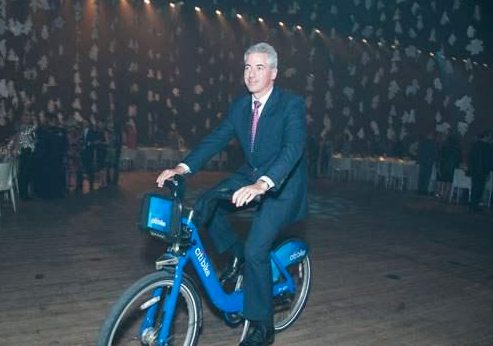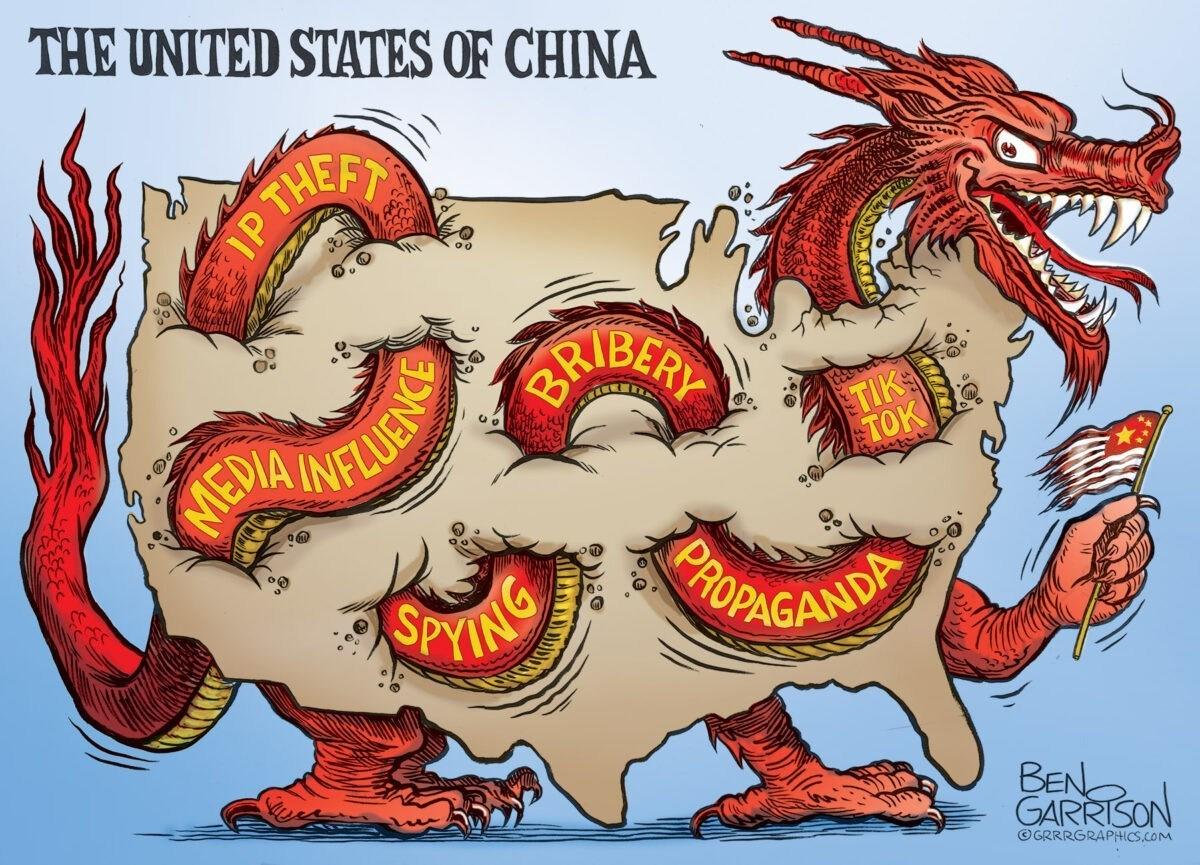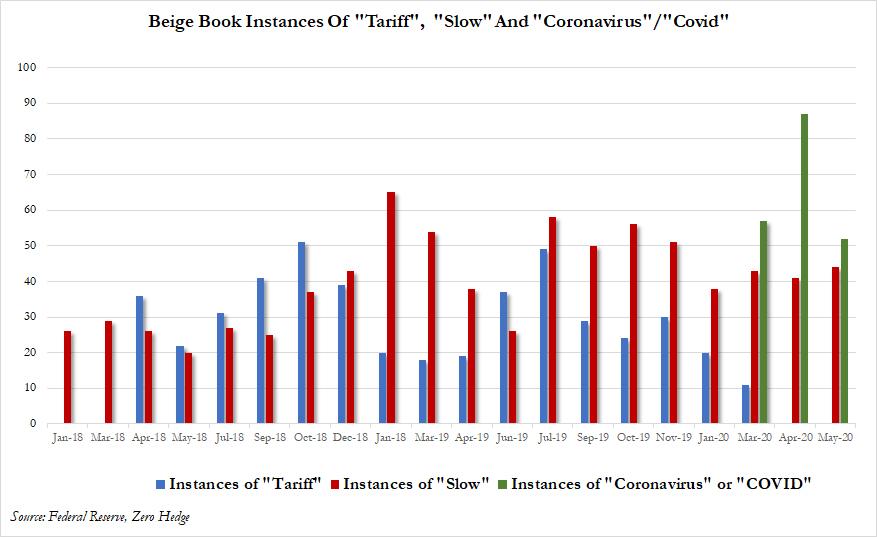How The Fed Unleashed A “Schrödinger Equilibrium” Between The Economy And Markets
Tyler Durden
Wed, 05/27/2020 – 15:15
In a fusion of finance (or what’s left of it in a centrally-planned world where asset prices no longer discount the future) and physics, BofA’s Claudio Irigoyen writes that the Schrödinger famous quantum physics experiment resembles the dichotomy that we find today between the state of the economy and some asset prices, in particular US stocks.
In 1935, Austrian physicist Erwin Schrödinger, trying to make the case that some people were misinterpreting quantum theory, designed a hypothetical experiment, famously known as the Schrödinger’s cat experiment. In a nutshell, the experiment goes, if you place a cat and something that could kill the cat (a radioactive atom) in a box and sealed it, you would not know if the cat was dead or alive until you open the box, so until then, the cat was in a sense both dead and alive.
The Schrödinger experiment, BofA argues, “resembles the dichotomy that we find today between the state of the economy and some asset prices, in particular US stocks” where market sentiment remains especially bearish. According to BofA’s most recent Global Fund Manager Survey (discussed here), only 10% of the respondents expect a V-shaped recovery and 75% think the recovery is likely to be either U or W-shaped. Positioning indicators also indicate maximum bearishness. Cash levels are at a record high. In line with that view, we downgraded again our global growth forecast. Now we expect a global contraction of 4.2% in 2020, down from 2.7% just six weeks ago. However, since March 23, US stocks (as measured by the S&P index) recovered 60% of the selloff that started in mid-February and are now trading just 12% below the peak before the crisis.
A natural question is then: how can we reconcile this decoupling between asset prices and expectations? Can the cat be dead and alive at the same time? Abusing the analogy, is this rebound a dead Schrodinger cat bounce? Or is there somebody making the dead cat look like it’s alive and kicking?
A natural question to ask, according to Irigoyen then, is: how can we reconcile this decoupling between asset prices and expectations? The answer, according to the BofA strategist is that “the most powerful element to explain the decoupling is the reaction function of the Fed (and admittedly of many other major central banks, including to some extent the ECB) and the expectation that this reaction function will remain unaltered in the future.” So should we just call it a Schrodinger Cat bounce then?
It’s the Fed, stupid
In order to make sense of this decoupling between expectations and asset prices, BofA notes that there is more than one element to consider.
- In the first place, positioning helps. As liquidity gradually recovered and with sentiment so bearish, people already adjusted their portfolios to the new steady state and are holding the risk they want to hold, so there are no marginal sellers. The pain trade is up, not down. But this can help explain why the market stopped falling, not so much why it rallied so violently. Indeed, extreme bearish positioning explains the recent stabilization in EM. However, the recovery in EM has been much more muted than in the US, so we cannot talk about a decoupling between sentiment and asset prices in EM.
- Another argument that could explain the decoupling is the relative composition of the S&P index, which is likely overrepresented by the relative beneficiaries of the COVID-19 shock, such as tech companies, the most overweight sector in the index. On the other hand, the SMEs, which are impacted the most by the recession, are not listed in the exchanges. Again, this argument can have some validity but is not necessarily verified in other countries also hit by the outbreak.
- A third argument has to do with investors’ expectations. If investors are too optimistic about the shape of the recovery, more inclined towards a V-shaped recovery, we could have a decoupling between the state of the economy and the stock market which is by its own nature forward-looking. Again, we have seen that this argument is prima facie inconsistent with what the GFMS revealed to us this week. In order to rescue the argument, we need to assume some sort of self-selection, in which the most bullish investors are more active than the bearish ones. “Possible, but stretched”, according to Irigoyen .
The analysis above leaves BofA with what the bank thinks is the most powerful element to explain the decoupling: the reaction function of the Fed (and admittedly of many other major central banks, including to some extent the ECB) and the expectation that this reaction function will remain unaltered in the future.
On top of the fiscal programs implemented by the governments of the main economies, central banks around the world have been flooding financial systems with liquidity. The goal has been to reestablish as quickly as possible both market and funding liquidity, with a particular focus on helping SMEs to finance working capital to avoid disruptive bankruptcies. In the case of the Fed, liquidity programs were complemented with credit programs. As part of the several funding and credit facilities implemented, the programs include buying not only Treasuries but also MBS, Commercial Papers and Corporate Debt and Corporate Bond ETFs. Not surprisingly, BofA thinks that “buying risky assets has been key to prop up asset prices and the stock market.“
In a nutshell, what all this means for asset prices is that the Fed put was increased to a record size and the market expectation is that if the economy falls even further, the Fed will step up buying more risky assets and even potentially buying equities, although the bar is very high for that to happen. The Fed is effectively intervening in the market for risky assets in a sort of “whatever it takes” type of reaction function which was strong enough to coordinate towards a stable equilibrium.
Here BofA takes a detour to clarify that “in theory”, the Fed buying program “should not affect the fair value of asset prices, which are the risk-adjusted discounted present value of cash flows, therefore independent of “supply and demand”. Since the Fed is not removing risk from the economy by buying risky assets, but just transferring the risk to taxpayers, in an economy with no market segmentation, people properly discount higher taxes to cover potential Fed losses and therefore the Fed reshuffling does not affect asset prices in equilibrium. However, if markets are segmented, as they are in reality, Modigliani-Miller doesn’t work, even if Ricardian equivalence holds. With sufficient segmentation, the effect on asset prices can be significant.
Even though the fall in interest rates naturally helps stock prices, being an endogenous reaction to a negative shock, it cannot have a first-order effect. The main channel through which the Fed affects asset prices is the risk premium channel. By effectively acting as lender and buyer of last resort, the Fed affects the risk premium and coordinates expectations towards the “good equilibrium”, avoiding endogenous runs against risky assets and setting a floor on the market, the so called Fed put.
* * *
This brings us to the next question: as part of its new “helicopter money mandate” is the Fed also doing fiscal policy?
According to BofA, the program implemented by the Fed, loosely named QE, is in fact way more than QE. Strict Quantitative Easing refers to the policy of creating reserves in order to purchase short-term government bonds. Not even buying long term government bonds represents QE, as this can be thought of the combination of QE and a swap of short-term for long-term government bonds, also known as Operation Twist. At the zero lower bound for short-term interest rates, buying long term government bonds and Operation Twist are equivalent and it can be argued that if those operations belong to the sphere of debt management (issuing short term bonds to rescue long term bonds), they should be conducted by the Treasury rather than the central bank.
If not even buying long term government bonds represents QE, much less in the case of buying risky assets. When the Fed buys risky assets, which can be called targeted purchases, it is not doing monetary policy but credit policy. It is a form of direct lending and it can be argued also that the Fed, by redistributing risks, is actually doing fiscal policy or at the very least monetizing the fiscal deficit, as the Fed could buy short term government debt that the Treasury could issue to fund targeted credit programs.
Even though the difference is subtle, it is in the realm of Congress to implement such policies rather than the Fed. Pushing the Fed to implement them and indirectly picking winners and losers can increase the implementation risks and undermine the perceived independence of the central bank, in addition to the obvious moral hazard implications, which can arguably be considered second-order given the nature and magnitude of the crisis.
This brings us to the conclusion: what are the unexpected consequences of positive surprises
According to Irigoyen, and tying the analysis back to an economy – which like Schrodinger’s cat is both alive and dead – “if the stock market is being supported by the reaction function, current and expected, of the Fed, it means that the shadow level at which the stock market would be trading absent the Fed’s support would be much lower.” That raises an interesting question: how much can the stock market rally if in the coming weeks, as lockdown policies are being relaxed, economic activity surprises positively relative to already very depressed expectations?
The answer is that certainly much less than proportionally, as the positive surprises on the one hand should lift the shadow fair value for the stock market, but on the other hand reduce the market value of the Fed put (as it would be less in the money). It could even happen in extreme that the stock market remains unaltered, only the factors explaining the observed level change. Needless to say that the short term reaction will likely be consistent with a mild rally, “but a rally that would leave the market even more vulnerable than it is now”, or as another BofA strategist, Benjamin Bowler put it, the higher stocks rise, the more fragile the market becomes.
On the contrary, if economic activity surprises to the downside, it would put significant pressure on the Fed to validate the put, which, given the arguments outlined above, might not necessarily be followed by a strong reaction, leaving the market wondering if the size of the Fed put has a limit.
Based on all of the above, BofA concludes that “the risk-reward of being long US stocks does not appear as particularly attractive.”
via ZeroHedge News https://ift.tt/3daloNg Tyler Durden



